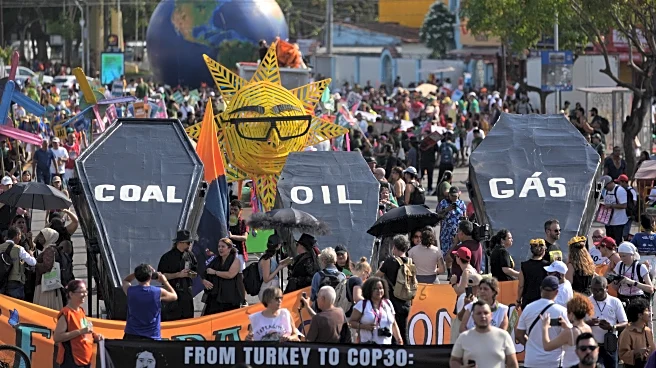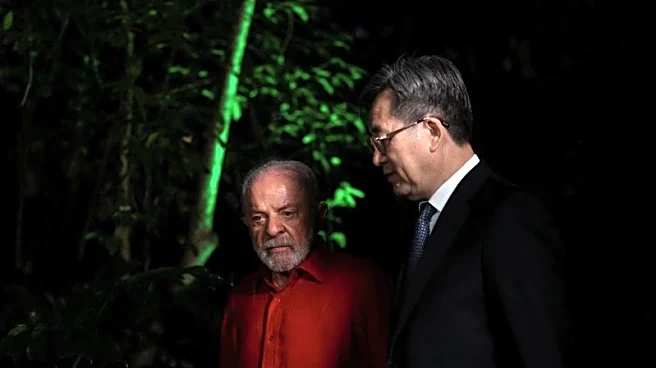What's Happening?
The United Nations Environmental Programme has released its latest emissions gap report, indicating that new climate pledges under the Paris Agreement have only slightly reduced global temperature projections
for this century. The report warns that the planet remains on track for catastrophic climate events, with projected temperatures ranging between 2.3°C and 2.5°C above preindustrial levels. Total greenhouse gas emissions increased by 2.3% from 2023 to 2024, driven largely by land use changes and forestry. The report highlights the absence of the United States at the COP30 climate conference in Brazil as a significant setback for global climate efforts.
Why It's Important?
The findings of the emissions gap report underscore the urgent need for more aggressive climate action to prevent catastrophic environmental impacts. The increase in greenhouse gas emissions and the projected temperature rise pose significant risks to ecosystems, economies, and human health worldwide. The absence of the United States, one of the largest emitters, at COP30 may hinder international efforts to achieve meaningful policy changes and emissions reductions. This situation highlights the critical role of global cooperation and leadership in addressing climate change.
What's Next?
As the COP30 conference continues, there may be increased pressure on major emitters, including the United States, to commit to more ambitious climate goals and actions. The report's findings could prompt renewed discussions on enhancing international climate agreements and implementing effective mitigation strategies. Policymakers and environmental organizations may advocate for stronger commitments and accountability measures to ensure progress towards limiting global temperature rise.
Beyond the Headlines
The report's implications extend beyond immediate climate policy discussions, highlighting the ethical and economic dimensions of climate change. The failure to meet climate goals could exacerbate social inequalities and economic disparities, particularly in vulnerable communities. Long-term shifts in energy production, consumption patterns, and land use may be necessary to achieve sustainable climate outcomes.













